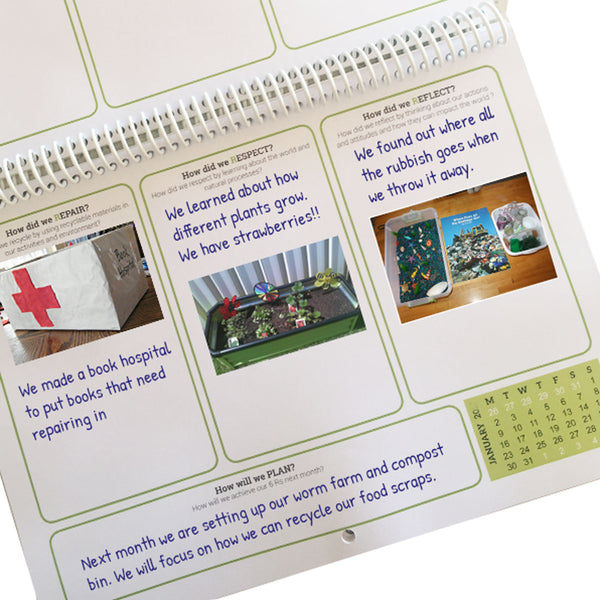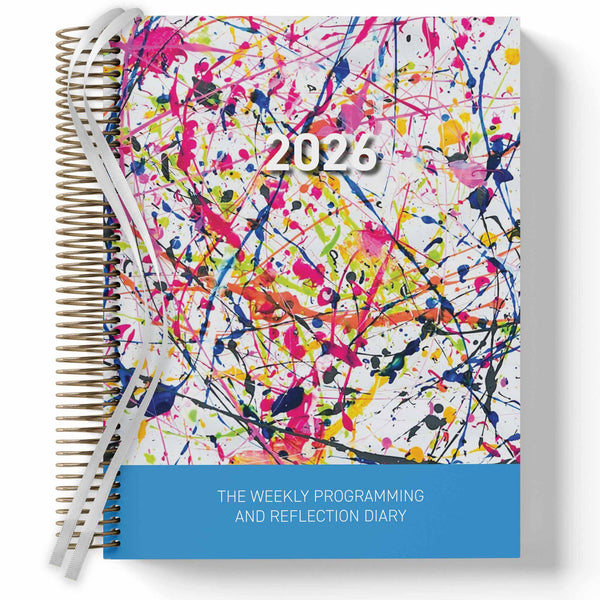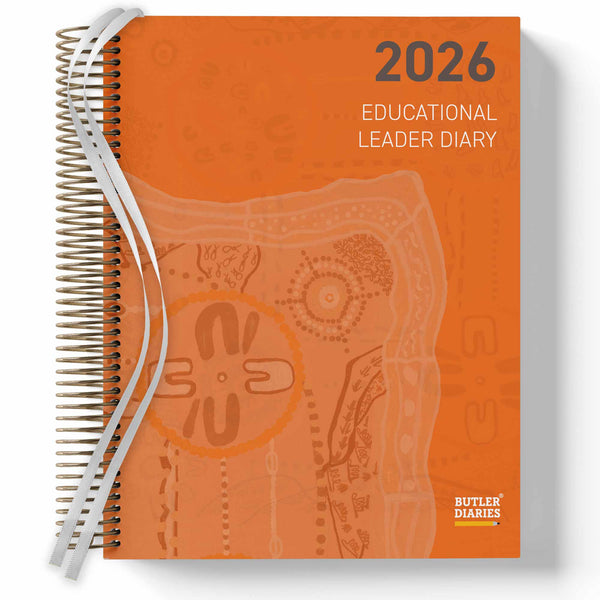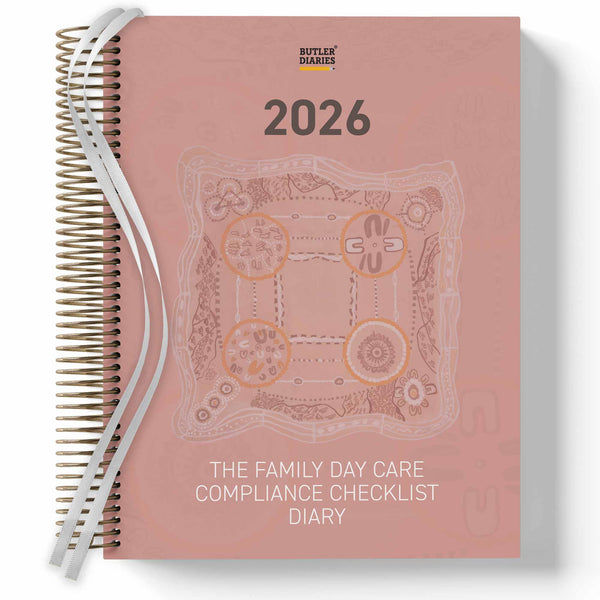At Butler Diaries, we reuse all our packaging we receive our Diaries in from our suppliers to send out our orders to you. So if you use them in your service, these boxes are being reused 3 times at least! Cardboard boxes are versatile and cost-effective resources that can ignite creativity and learning in Early Childhood Education and Care (ECEC). So save your Butler Diaries box from your order and try out one of the below activity ideas that utilise cardboard boxes (linked to the Early Years Learning Framework (EYLF) outcomes of course):
1. Box City Construction
Activity: Provide various cardboard boxes of different sizes, tape, markers, and paint for children to build a city. They can create buildings, cars, or roads.
EYLF Link:
- Outcome 4.1: Children develop curiosity, creativity, and problem-solving as they construct and design.
- Outcome 5.1: Children interact verbally and non-verbally to share ideas while collaborating on the city.
2. Imaginative Role Play
Activity: Transform a large box into a vehicle (car, bus, rocket), house, or shop. Children can decorate it and engage in role play.
EYLF Link:
- Outcome 1.2: Children develop their sense of identity through imaginative and dramatic play.
- Outcome 5.3: Children express ideas using materials and pretend scenarios.
3. Sensory Exploration
Activity: Create a sensory tunnel by cutting holes into a large box and attaching textures like bubble wrap, fabric, or sandpaper. Children can crawl through or explore textures with their hands.
EYLF Link:
- Outcome 3.2: Children take increasing responsibility for their physical and sensory wellbeing.
- Outcome 4.2: Children engage in active exploration to develop understanding.
4. Art Studio
Activity: Use a flattened cardboard box as a canvas for group painting or a giant mural. Alternatively, let children turn a box into a 3D sculpture using collage materials.
EYLF Link:
- Outcome 4.1: Children develop creativity and innovation as they experiment with art.
- Outcome 5.3: Children make meaning using creative expression.
5. Box Puppet Theatre
Activity: Turn a box into a puppet theatre. Children can make puppets from socks or sticks and perform shows for their peers.
EYLF Link:
- Outcome 1.1: Children feel safe, secure, and supported while expressing themselves in performance.
- Outcome 5.1: Children engage in meaningful communication and storytelling.
6. STEM Exploration
Activity: Use cardboard boxes for STEM challenges like creating a marble run, ramps for cars, or balancing structures.
EYLF Link:
- Outcome 4.2: Children transfer and adapt what they learn in construction and engineering play.
- Outcome 5.4: Children explore the concepts of motion, gravity, and design.
7. Obstacle Course
Activity: Incorporate cardboard boxes as tunnels, stepping platforms, or barriers in an obstacle course.
EYLF Link:
- Outcome 3.2: Children engage in physical activity and develop coordination.
- Outcome 4.1: Children develop problem-solving skills to navigate challenges.
8. Literacy Activity – Post Office
Activity: Turn a box into a mailbox. Children can write letters or draw pictures to ‘post’ to their friends or educators.
EYLF Link:
- Outcome 5.2: Children use symbols, letters, and language to communicate ideas.
- Outcome 1.4: Children learn to connect and contribute to their community.
9. Nature Exploration
Activity: Use boxes to create planters for seeds or as a base for nature-inspired art using leaves, sticks, and flowers.
EYLF Link:
- Outcome 2.4: Children develop respect for the environment through sustainable practices.
- Outcome 4.4: Children investigate and explore natural processes.
10. Box Maze
Activity: Arrange multiple large boxes into a maze that children can crawl through and solve. Add lights or cut windows for visibility.
EYLF Link:
- Outcome 4.3: Children develop thinking skills and persistence to overcome challenges.
- Outcome 3.1: Children take increasing responsibility for their health and wellbeing as they navigate safely.
Cardboard boxes provide endless opportunities for open-ended, child-led play, encouraging collaboration, problem-solving, and creative expression, all while supporting the principles and practices of the EYLF.
Here are some tips to enhance cardboard box activities in ECEC, ensuring they are engaging, cost-effective, and aligned with the EYLF:
1. Involve Families
-
In addition to saving your own boxes, ask families to contribute cardboard boxes of various sizes (e.g., from online shopping, appliances, or cereal boxes). This fosters family participation and sustainability practices.
-
EYLF Link: Outcome 2.4 – Promote awareness of sustainable practices by reusing materials.
-
Share photos of children’s creations with families via newsletters or apps to strengthen the home-to-service connection.
2. Plan for Open-Ended Play
-
Offer tools like markers, paints, glue, and tape, but avoid giving step-by-step instructions. Allow children to explore and create freely.
-
Tip: Set up a dedicated "creation station" where children can return to their projects over several days.
-
EYLF Link: Outcome 4.1 – Encourage creativity and autonomy.
3. Create Themes with Children
-
Collaborate with children to decide how the boxes will be used. Whether it’s a castle, a rocket, or a puppet theatre, their input will increase engagement.
-
Tip: Incorporate their ideas into intentional teaching moments.
-
EYLF Link: Outcome 1.2 – Children develop a sense of agency and ownership over their play.
4. Incorporate Sustainability
- Use this opportunity to teach children about recycling and reusing materials. Discuss how using cardboard boxes helps reduce waste. Don't forget to record it in your Sustainability Calendar.
- Tip: Create a "sustainability corner" where reusable items like boxes, paper rolls, and bottle caps are stored for future activities.
- EYLF Link: Outcome 2.4 – Develop respect for the environment.
5. Ensure Safety
- Check all boxes for staples, sharp edges, or other hazards before use. Cut windows and doors in advance to avoid accidents.
- Tip: Use child-safe tools and supervise any cutting or gluing activities.
- EYLF Link: Outcome 3.2 – Promote safe and healthy practices.
6. Extend the Learning
- Add literacy or numeracy elements, such as:
- Writing signs for box shops.
- Labelling buildings in a box city.
- Counting the boxes used in a tower or maze.
- Tip: Incorporate intentional teaching moments during free play to deepen learning.
- EYLF Link: Outcome 5.2 – Support children’s emerging literacy and numeracy.
7. Rotate Materials
- Introduce new materials weekly to keep the activity fresh, such as fabric for costumes, string for pulley systems, or natural items like leaves and twigs.
- Tip: Rotate the focus of activities, e.g., from role play to STEM exploration.
- EYLF Link: Outcome 4.3 – Support sustained engagement through varied materials.
8. Use Outdoor Space
- Take large boxes outside for bigger projects like constructing forts or tunnels. Incorporating nature adds another dimension to the play. Add this experience to your Central Outdoor Weekly Programming and Reflection Diary.
- Tip: Encourage children to incorporate natural elements, like sticks or leaves, into their constructions.
- EYLF Link: Outcome 2.1 – Foster children’s connection to the natural world.
9. Document the Process
- Take photos or videos of children engaging with the boxes, from planning to final creations. Display these in the room or include them in programming documentation.
-
Tip: Ask children to narrate their creations to include their voices in documentation.
EYLF Link: Outcome 5.3 – Encourage children to use various forms of media to express ideas.
10. Build Community Awareness
- Share the children’s box creations with the wider community, such as setting up a display during open days or events.
- Tip: Use the opportunity to engage with local businesses for larger cardboard donations.
- EYLF Link: Outcome 2.3 – Encourage children to connect with their local community.
These tips not only enrich the activity but also build a collaborative, sustainable, and safe environment for children to thrive. They also reinforce your service's commitment to the EYLF principles and outcomes. Don't forget to record all your experience and children's journey in your programming documentation.






























